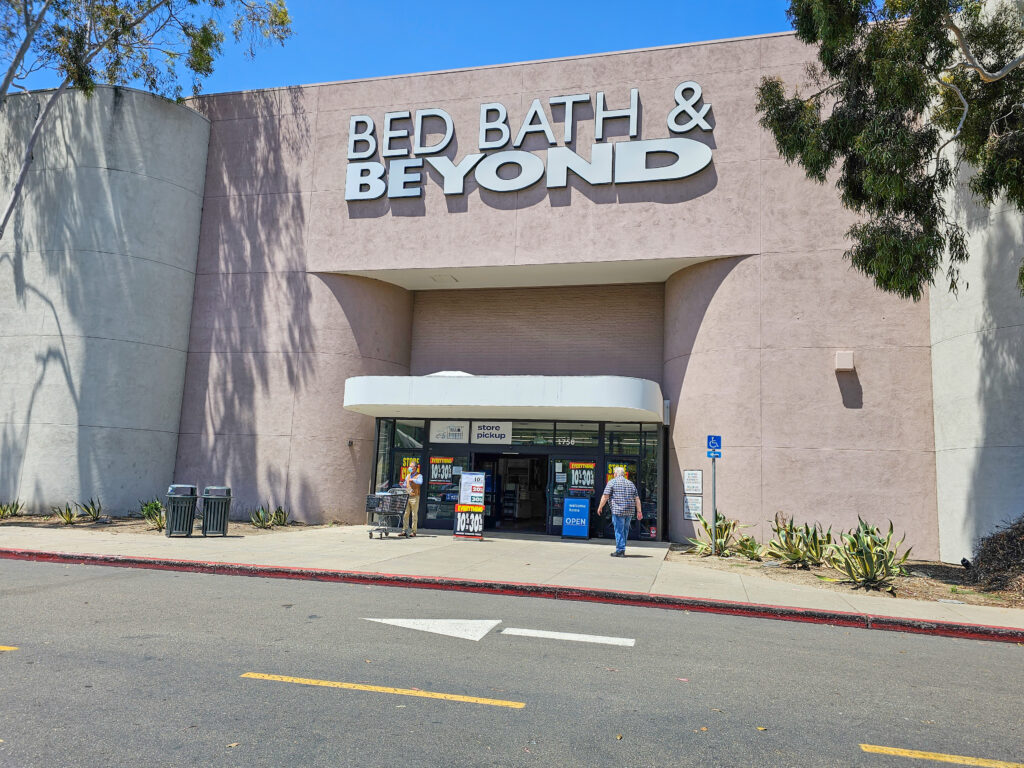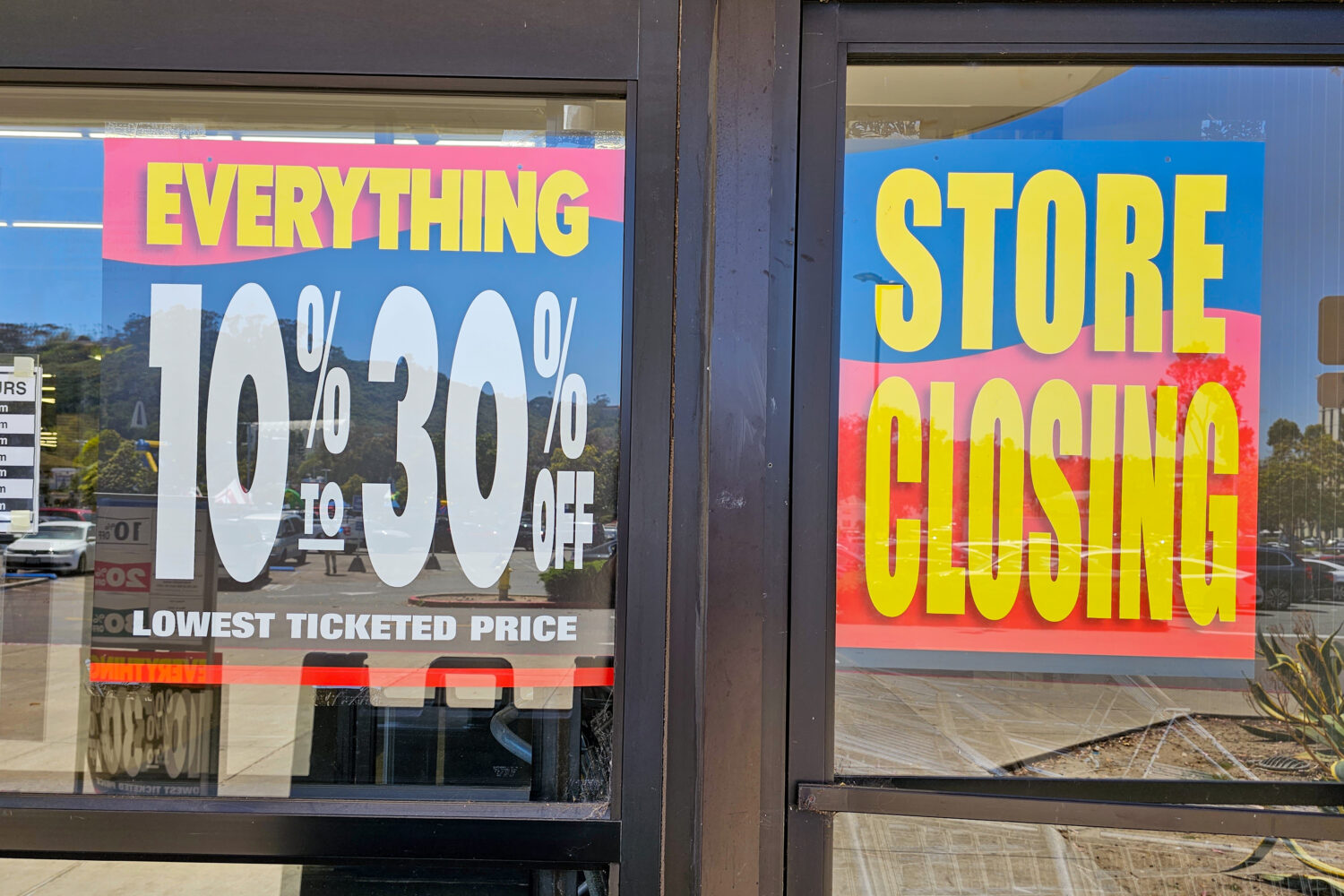Today, my wife and I drove down Texas Street from University Heights into Mission Valley and our local Bed Bath & Beyond. About 24 hours earlier, liquidation sale started—as the retailer begins to wind down all operations in U.S. stores following an April 23, 2023 Chapter 11 Bankruptcy filing. Some people will say that SARS-CoV-2 (severe acute respiratory syndrome Coronavirus 2)/COVID-19 lockdowns killed the company, and they would be mistaken.
Bed Bath & Beyond’s demise is more complicated but two causes are fundamental, and one was exacerbated by the nation’s pandemic response. The first: Unnecessary debt. I told my wife years ago that too many public companies used cheap credit to buy back, and therefore bolster, shares. That’s the real reason for tech stalwarts like Amazon, Facebook, Google, Microsoft, and the like laying off tens of thousands of workers. Trust me: It’s not the economy but cost-cutting because of debt.
Over at CNN, Chris Isidore spells out the problem clearly in story: “The $11.8 billion mistake that led to Bed Bath & Beyond’s demise“. He writes:
Bed Bath & Beyond grew particularly active share repurchases in July 2014, taking on $2 billion in debt to finance share buybacks, as it started to face pressure from activist shareholders to improve the stock’s performance. The company had carried relatively little debt to that point, and it put Bed Bath & Beyond on a path toward a debt load that ultimately proved unaffordable….
Share repurchases are a way for companies to return cash to shareholders indirectly, without them having to pay taxes as they would on a stock dividend. The idea is that by reducing the number of shares outstanding, each remaining share of stock in the hands of investors becomes more valuable. For example, if a company earns $100 million in a quarter, and it has 100 million shares outstanding, it earned $1 a share. If it repurchases 10 million of those shares, its earnings per share increases to $1.11, or 11 percent, even if its total profits don’t increase at all.
The second: Redesign. During the pandemic-response lockdowns, my wife and I visited the same Bed Bath & Beyond that we went to today and were shocked to see little stock was on store shelves. We assumed that supply-chain problems created the situation. We would later learn that the company chose to revamp stores, by shifting to more in-house brands, opening up the aisles, and carrying less inventory.
The hallmark of the Bed Bath & Beyond experience had been clutter and coupons. Over at Wall Street Journal, in story “Bed Bath & Beyond Decluttered Its Stores and Ended Up Frustrating Shoppers“, Suzanne Kapner explains how the retailer ruined the formula for its success. Turns out that we weren’t the only shoppers who wanted stuffed shelves. Excerpt:
Reducing the product selection left customers with fewer choices when seeking substitutes for out-of-stock items, the former employees said. Swapping out national labels for new private-label brands—aimed at boosting profits and sales—can be disruptive even in normal times, but it created even bigger challenges during the pandemic, said suppliers and the former employees.
Yes, supply chain hiccups hampered Bed Bath & Beyond, but mainly because the company chose to carry less stock and rely on more house brands at an inopportune time. The Coronavirus crisis needn’t have been any more impactful than experienced by other home goods retailers. And, you gotta know, that if your business carries billions in debt, you need income. Nothing to sell, or customers wanting to buy, is the road to ruin. Bed Bath & Beyond alienated core customers.
Returning to our visit, I was sorry for having suggested it. Already, store shelves were quite barren, and the place made me feel unsettled, seeing a retailer that had once been so vibrant seeming so much like a tomb. Bed Bath & Beyond died during the 2021 redesign. The bankruptcy liquidation is an estate sale.
I used Samsung Galaxy S23 Ultra to capture the Featured Image and companion. Vitals: f/1.7, ISO 10, 1/800 sec, 23mm (film equivalent); 12:15 p.m. PDT. The other is same but ISO 12 and 1/180 sec one-minute later.
Following the second shot, as Annie and I walked to our car, another shopper said to us: “The prices are too high”. Ah, yeah. And the 20-percent discount coupons—a signature feature of Bed Bath & Beyond’s retail strategy—are no long accepted.

